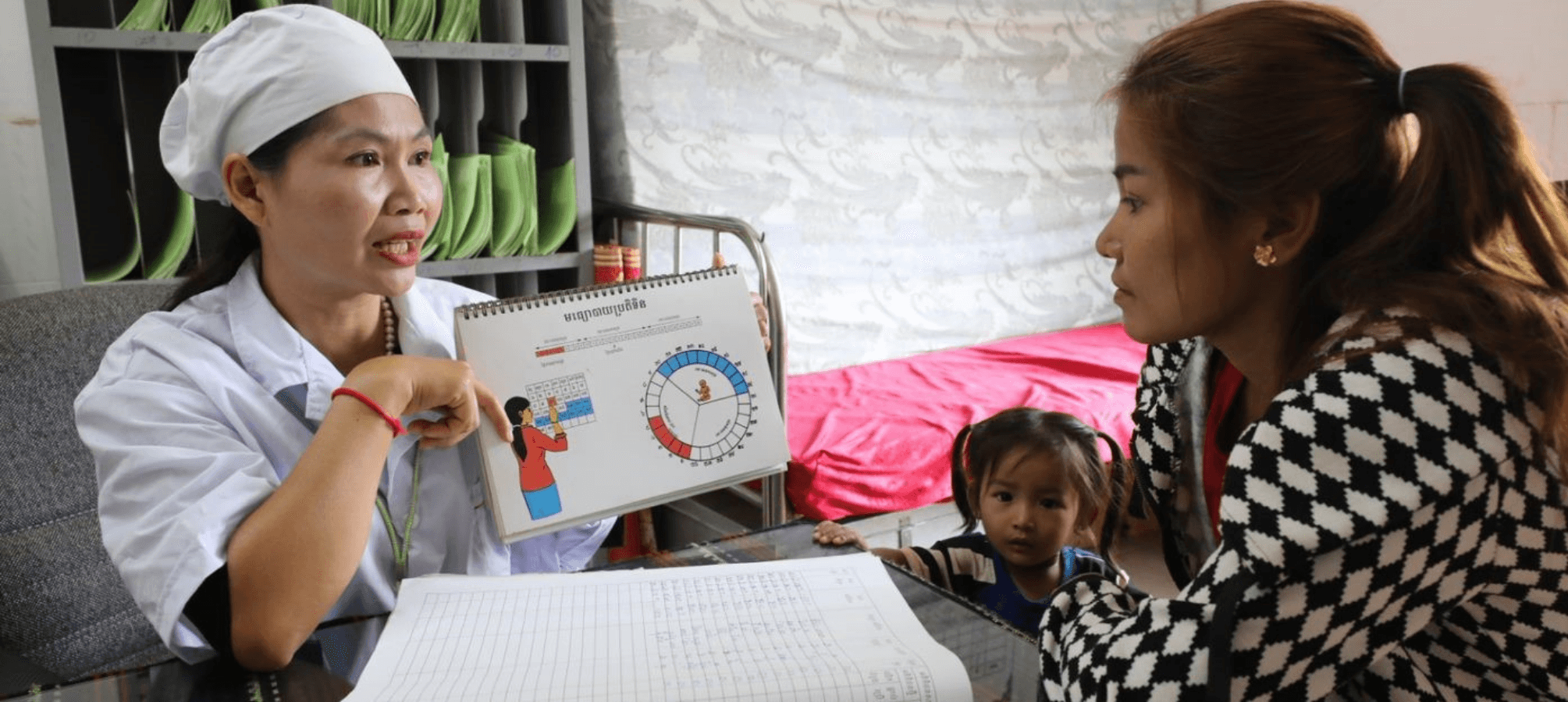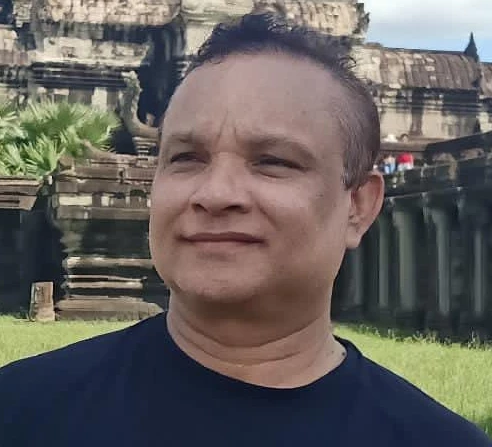 A nurse speaks to a young mother
A nurse speaks to a young mother
Cambodia has achieved significant economic growth and secured key health indicators since 1980—when it was left with only 50 doctors. The country is climbing steadily toward obtaining universal health coverage (UHC), but the stairs are long.
While the country is striving to ensure health for all, it is fighting with stagnant and high out-of-pocket (OOP) spending on health expenses borne directly by patients and facing a double burden of communicable and non-communicable diseases. Cambodia’s current OOP spending is at around 60 percent of health expenditure, which poses a substantial risk of impoverishment to many households.
To tackle these issues, Cambodia is renewing its commitment to carry out the next implementation phase of the Health Equity and Quality Improvement Project (H-EQIP). The project targets health equity and quality improvement by focusing on financing sustainability and implementation of major health system initiatives. It builds on the work carried out by the Government of Cambodia and its development partners over the years to improve access to quality health services for targeted population groups, while protecting against impoverishment due to health service costs to patients.
During its current first phase of implementation, between 2016 and 2021, the Cambodian Ministry of Health (MOH) has introduced several health financing innovations designed to provide fair and equitable access to health care. These are especially designed for marginalized groups, based on socio-economic status, geographical regions, ethnic groups and gender.
For example, the project introduced an innovative voucher program targeting reproductive health services for women from vulnerable groups and the poor. The program gives grants to referral hospitals and operational districts throughout the country—providing more autonomy in using human and financial resources to deliver quality reproductive health services.
H-EQIP is co-financed by the Cambodian government, the World Bank, and several partner agencies including: the Australian Department of Foreign Affairs and Trade, the German Development Bank, the Korean International Cooperation Agency, and Japan’s Population and Human Resources Development program.
Health financing
The project also supports the Health Ministry’s Health Equity Fund (HEF)—a scheme to improve access to healthcare by reimbursing public health facilities for services delivered to the poorest and most marginalized groups.
HEF has grown from a series of small NGO-run pilot programs in the early 2000s to a government-owned nationwide social protection and health financing mechanism which provides comprehensive coverage to about three million poor people. Thanks to the program, the financial protection for poor households has improved significantly. HEF increased access to health care, transport, and incidental costs associated with hospitalization.
There is evidence of an increase in the use of public health services among HEF beneficiaries. From 2015 to 2018, the number of out-patient visits per HEF beneficiary per year increased by 40 percent.
Building on solid ground
Building on this successful fast track to UHC, the Cambodian MOH is now designing the next phase of H-EQIP. It will consolidate and institutionalize the ongoing successes of the project, while also taking further steps in health financing reform.
Planned for the period between 2022 and 2027, the next phase aims to increase the equitable usage of health services and strengthen the quality and sustainability of health systems. These, coupled with improved management and accountability, will substantively boost health outcomes and accelerate the development of the country.
Enhancing equal access to health services
To enhance access to health services, HEF will be used to both maintain the current National Social Health Protection Framework and to improve poor beneficiaries’ access to health services. Due to the COVID-19 pandemic, this protection plan might also be expanded.
Furthermore, reducing inequities in health outcomes, especially for marginalized groups—the poor, remote rural population, ethnic minorities and women—will be strongly emphasized. Special attention will also be placed on providing a package of services, with an increased focus on non-communicable diseases.
Strengthening quality and sustainability of health systems
In the next phase, H-EQIP will further support the MOH’s countrywide implementation of the National Quality Enhancement Monitoring Program, an internal quality improvement process to help hospitals reach higher national quality standards. Other expected outcomes include enhancements to give sub-national authorities more responsibility for health service delivery, in line with the national decentralization strategy. Additionally, the national Payment Certification Agency, which is responsible for monitoring, verifying and certifying HEF claims, is to play a key role in developing the social health protection system.
Pro-poor significance
These plans are critically important for the MOH, the sub-national health administrations, and the Ministry of Economy and Finance to achieve equitable access to health services. Their pro-poor approach focuses on efficient public financing of primary and secondary care and provides essential health packages to address inequities in public spending and distribution of essential health services.



Join the Conversation